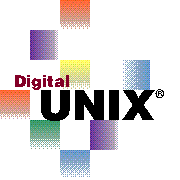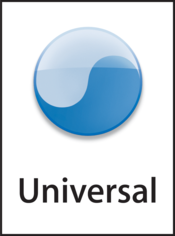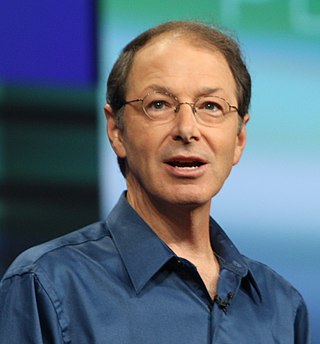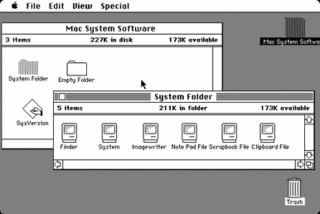Mach is a kernel developed at Carnegie Mellon University by Richard Rashid and Avie Tevanian to support operating system research, primarily distributed and parallel computing. Mach is often considered one of the earliest examples of a microkernel. However, not all versions of Mach are microkernels. Mach's derivatives are the basis of the operating system kernel in GNU Hurd and of Apple's XNU kernel used in macOS, iOS, iPadOS, tvOS, and watchOS.

Tru64 UNIX is a discontinued 64-bit UNIX operating system for the Alpha instruction set architecture (ISA), currently owned by Hewlett-Packard (HP). Previously, Tru64 UNIX was a product of Compaq, and before that, Digital Equipment Corporation (DEC), where it was known as Digital UNIX.

NeXTSTEP is a discontinued object-oriented, multitasking operating system based on the Mach kernel and the UNIX-derived BSD. It was developed by NeXT Computer in the late 1980s and early 1990s and was initially used for its range of proprietary workstation computers such as the NeXTcube. It was later ported to several other computer architectures.

Carnegie Mellon University (CMU) is a private research university in Pittsburgh, Pennsylvania. Established in 1900, the Carnegie Institute of Technology merged with the Mellon Institute of Industrial Research to form the university as a single institution.
Darwin is the core Unix operating system of macOS, iOS, watchOS, tvOS, iPadOS and bridgeOS. It previously existed as an independent open-source operating system, first released by Apple Inc. in 2000. It is composed of code derived from NeXTSTEP, BSD, Mach, and other free software projects' code, as well as code developed by Apple.
The history of macOS, Apple's current Mac operating system formerly named Mac OS X until 2011 and then OS X until 2016, began with the company's project to replace its "classic" Mac OS. That system, up to and including its final release Mac OS 9, was a direct descendant of the operating system Apple had used in its Mac computers since their introduction in 1984. However, the current macOS is a Unix operating system built on technology that had been developed at NeXT from the 1980s until Apple purchased the company in early 1997.

A/UX is a Unix-based operating system from Apple Computer for Macintosh computers, integrated with System 7's graphical interface and application compatibility. Launched in 1988 and discontinued in 1995 with version 3.1.1, it is Apple's first official Unix-based operating system. A/UX requires select 68k-based Macintosh models with an FPU and a paged memory management unit (PMMU), including the Macintosh II, SE/30, Quadra, and Centris series.
Avadis "Avie" Tevanian is an American software engineer. At Carnegie Mellon University, he was a principal designer and engineer of the Mach operating system. He leveraged that work at NeXT Inc. as the foundation of the NeXTSTEP operating system. He was senior vice president of software engineering at Apple from 1997 to 2003, and then chief software technology officer from 2003 to 2006. There, he redesigned NeXTSTEP to become macOS. Apple’s macOS and iOS both incorporate the Mach Kernel, and iPadOS, watchOS, and tvOS are all derived from iOS. He was a longtime friend of Steve Jobs.
OSF/1 is a variant of the Unix operating system developed by the Open Software Foundation during the late 1980s and early 1990s. OSF/1 is one of the first operating systems to have used the Mach kernel developed at Carnegie Mellon University, and is probably best known as the native Unix operating system for DEC Alpha architecture systems.
OpenAFS is an open-source implementation of the Andrew distributed file system (AFS). AFS was originally developed at Carnegie Mellon University, and developed as a commercial product by the Transarc Corporation, which was subsequently acquired by IBM. At LinuxWorld on 15 August 2000, IBM announced their plans to release a version of their commercial AFS product under the IBM Public License. This became OpenAFS. Today, OpenAFS is actively developed for a wide range of operating system families including: AIX, Mac OS X, Darwin, HP-UX, Irix, Solaris, Linux, Microsoft Windows, FreeBSD, NetBSD.
The Andrew Project was a distributed computing environment developed at Carnegie Mellon University (CMU) beginning in 1982. It was an ambitious project for its time and resulted in an unprecedentedly vast and accessible university computing infrastructure.
MkLinux is an open-source software computer operating system begun by the Open Software Foundation Research Institute and Apple Computer in February 1996, to port Linux to the PowerPC platform, and Macintosh computers. The name refers to the Linux kernel being adapted to run as a server hosted on the Mach microkernel, version 3.0.

XNU is the computer operating system (OS) kernel developed at Apple Inc. since December 1996 for use in the Mac OS X operating system and released as free and open-source software as part of the Darwin OS, which in addition to macOS is also the basis for the Apple TV Software, iOS, iPadOS, watchOS, and tvOS OSes. XNU is an abbreviation of X is Not Unix.

Rhapsody is the development series of Apple Computer's next-generation operating system. Targeting only developers for a transition period, its releases came between Apple's purchase of NeXT in late 1996 and the announcement of Mac OS X in 1998. Rhapsody represented a new and exploratory strategy for Apple, more than an operating system, and runs on x86-based PCs and on Power Macintosh. Its OPENSTEP based Yellow Box API frameworks were ported to Windows NT for creating cross-platform applications. Eventually, the non-Apple platforms were discontinued, and later versions consist primarily of the OPENSTEP operating system ported to Power Macintosh, merging the Copland-originated GUI of Mac OS 8 with that of OPENSTEP. Several existing classic Mac OS frameworks were ported, including QuickTime and AppleSearch. Rhapsody can run Mac OS 8 and its applications in a paravirtualization layer called Blue Box for backward compatibility during migration to Mac OS X.

The universal binary format is, in Apple parlance, a format for executable files that run natively on either PowerPC or Intel-manufactured IA-32 or Intel 64 or ARM64-based Macintosh computers. The format originated on NeXTStep as "Multi-Architecture Binaries", and the concept is more generally known as a fat binary, as seen on Power Macintosh.

Richard Farris Rashid is the founder of Microsoft Research, which he created in 1991. Between 1991 and 2013, as its chief research officer and director, he oversaw the worldwide operations for Microsoft Research which grew to encompass more than 850 researchers and a dozen labs around the world.

The architecture of macOS describes the layers of the operating system that is the culmination of Apple Inc.'s decade-long research and development process to replace the classic Mac OS.
A hybrid kernel is an operating system kernel architecture that attempts to combine aspects and benefits of microkernel and monolithic kernel architectures used in computer operating systems.

Two major families of Mac operating systems were developed by Apple Inc.

Darling is a free and open-source macOS compatibility layer for Linux. It duplicates functions of macOS by providing alternative implementations of the libraries and frameworks that macOS programs call. This method of duplication differs from other methods that might also be considered emulation, where macOS programs run in a virtual machine. Darling has been called the counterpart to WINE for running macOS apps.










